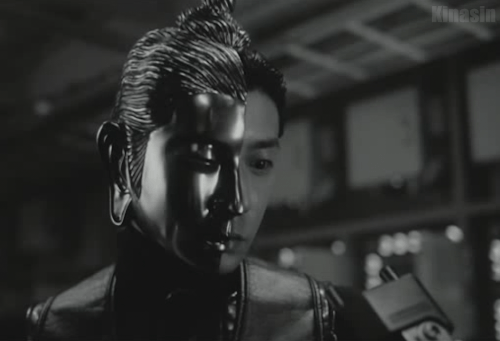
‘Despite being acclaimed as one of the most influential directors in modern Japanese cinema, Gakuryū “Sogo” Ishii – cyberpunk godfather and catalyst for an entire DIY film scene in the 80s – is a name long overlooked in western discourse. It’s obvious why: the majority of his films – from biker gang dystopias and cerebral new-age meditations to extroverted samurai showdowns – have barely received distribution outside his home country; a result of frustrating rights issues and bureaucratic red tape.’ — James Balmont
‘Born Toshihiro Ishii, he grew up in Hakata, and because of all the American military bases in the area, he was exposed to a lot of American rock music. He spent his teenage years a part of the punk rock movement that grew in that region, singing and playing the guitar.
‘In 1977 he enrolled at Nihon University in Tokyo, and founded Kyōei-sha (Crazy Film Group). He borrowed equipment from the school to shoot his own 8mm and 16mm short films, which featured the style and philosophy of his punk roots. It was difficult for a young person in Japan to make films during that period, and he decided to skip the traditional corporate ladder route to film directing by just making the films himself.
‘During his first year of college, one of Ishii’s short films called Panic High School got noticed by Nikkatsu, a movie studio known at the time for its pink films. Nikkatsu provided the funding to adapt the short into a feature-length film. Yukihiro Sawada co-directed the film with Ishii, who was still only a sophomore in college. It was around this time that he started going by Sogo Ishii.
‘Ishii directed his second feature Crazy Thunder Road as his senior thesis for university, and the 16mm film was subsequently bought by Toei, who distributed it in 35mm. As his fame started to grow, a popular punk band named Anarchy hired Ishii to shoot a promo for them, which resulted in a 10-minute film called Anarchy ’80 Ishin. He also adapted Katsuhiro Otomo’s manga Run into the 30-minute film Shuffle. He continued to use the university’s film equipment as long as he could, but since he had no intentions of actually graduating, they eventually kicked him out.
‘In 1982, Ishii directed Burst City, an action film about a wild gang of quasi-mutant bikers who ride into a town staging protests against the construction of a nearby nuclear reactor plant. The film starred members of Japanese punk bands The Roosters, The Rockers, The Stalin and Inu, among others. He became a favorite among rebel and punk cineastes in Japan. The film is also credited as a precursor to the underground Japanese cyberpunk movement that emerged later in the decade.
‘After the release of The Crazy Family, there was a period of ten years where Ishii couldn’t get any funding to make another feature film. His previous films had been very popular with foreign film festival audiences, but not with Japanese ones: they didn’t understand his films. He spent his time during this gap making shorts, music videos, and concert films, including ones for The Roosters and Einstürzende Neubauten.
‘Finally in 1994, he was hired to direct the feature film Angel Dust. Around this time he started to change his filmmaking style partly because he wanted to challenge himself to something new, but also because it had been very difficult to find funding for the types of films he made before. During this period he directed two films that were less plot driven: August in the Water and Labyrinth of Dreams.
‘The actor Tadanobu Asano teamed up with Ishii in 1996 to form the experimental noise band MACH-1.67, which would later compose some of the music for the film Electric Dragon 80.000 V. Ishii directed two films back to back: Gojoe, a 2000 action film about 12th century Japan, and Electric Dragon 80.000 V, a 2001 black-and-white 55-minute film. These two films combined the abstract style of his recent films with the intense energy of his early works. Ishii himself described this transition: “When I was young, all I could think about was speed. Then I wanted to start to slow things down a bit—now both are important.” While Electric Dragon was praised by critics, both films were huge financial flops: so much so that they put Suncent Cinema Works out of business.’ — Wikiwand
____
Stills
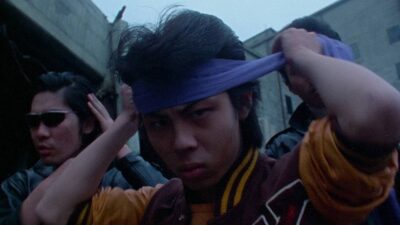

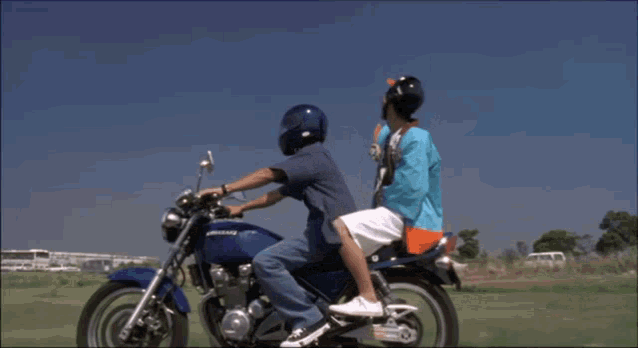
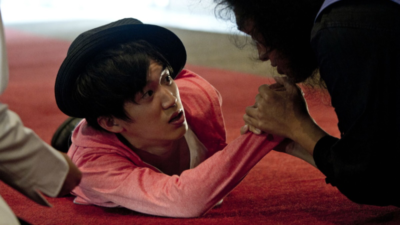
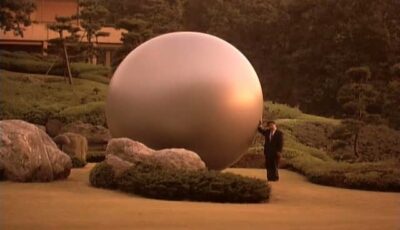
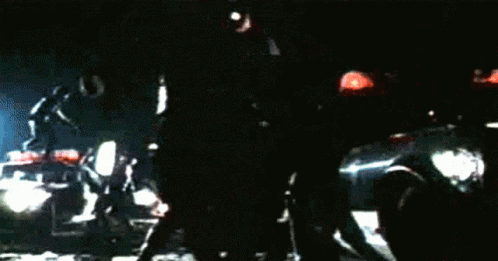


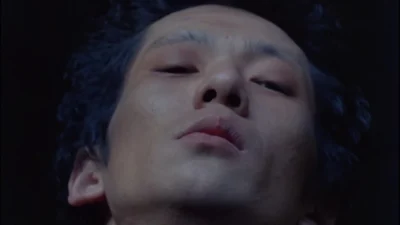
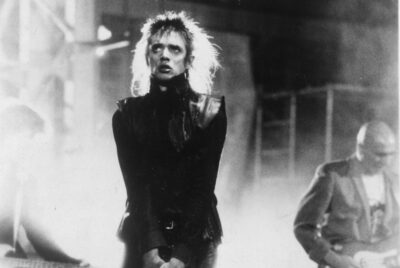

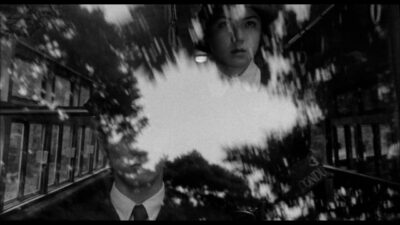


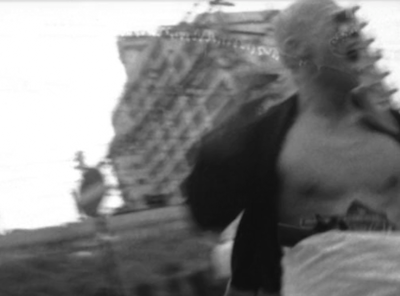

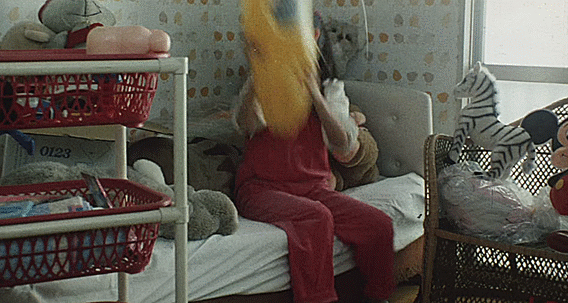
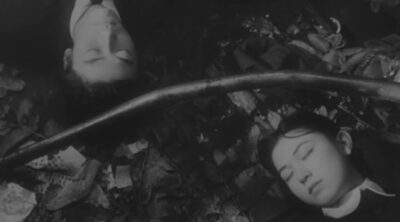

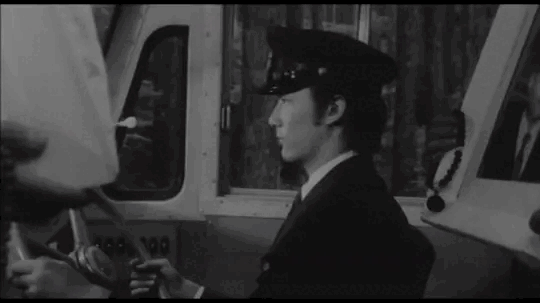
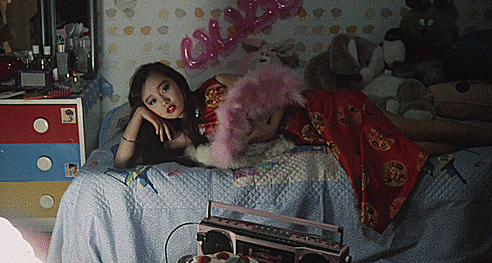
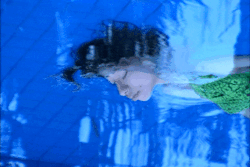
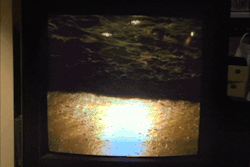




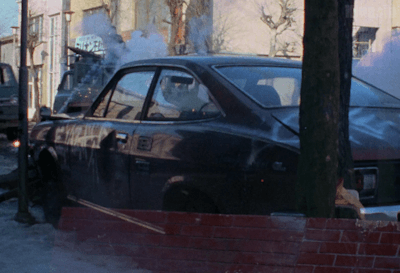


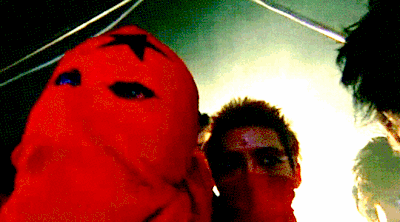


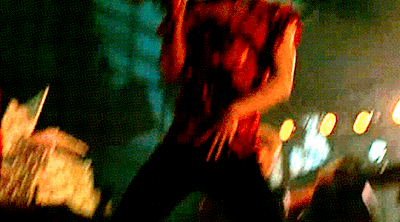

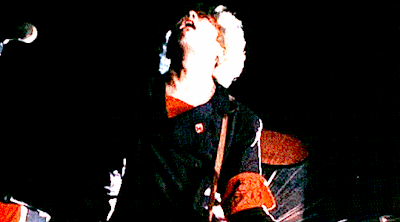


____
Further
Gakuryû Ishii @ IMDb
A Brief Introduction to the Mind-Altering Cinema of Sogo Ishii
GI @ MUBI
GI @ Letterboxd
DVD: Gakuryū Ishii Collection
Interview with Gakuryū Ishii
Gakuryū Ishii’s ‘Punk Samurai Slash Down’: Anarchy In The JP
Interview: Gakuryu Ishii
GI @ onderhond
The films and the fury of punk moviemaker Gakuryu Ishii
The films and the fury of punk moviemaker Gakuryu Ishii
‘Punk Samurai Slash Down’: An audacious adaptation that may look better on paper
Burst City, Halber Mensch and the other films of Gakuryu “Shogo” Ishii
____
Extras
The Early Films of Gakuryu Ishii
Interview
_____
Interview
from retrofuturista

What were your biggest influences when you started your career? What was the cultural atmosphere of Hakata in Kyushu at the beginning of your career?
I grew up in an old town in Hakata. The culture was unique. Those were chaotic times: wild nature; people with Latin-like character; a lot of domestic factories and noise; local customs, religions and diverse festivals; ethnic issues, the continuous alteration of landscapes because of high economic growth; radio broadcasts from the US military base; anti-war movement, riots, and crimes. But I think it was a wonderland for kids. The unique universe, which used to be a melting pot, was gradually dismantled, homogenized, and tamed by the modernization and rationalization of society. My gang resorted to violence and riding motorcycles to let out their stress and discontent. The ambitious big brothers became addicted to music.
I was frustrated. I wanted to express myself. I tried music, painting, poetry, and manga, but none of them worked out. I lacked the talent for them. There were a lot of movie theaters showing B-movies in the town, so I watched tons of movies since I was little. When I was in my third year of high school, Japan’s 8mm equipment greatly advanced, and that innovation gave me hope that maybe I could use it to film movies. Then I started to watch movies more consciously to learn expression techniques. I kept watching movies by Kinji Fukasaku, Sam Peckinpah, Kubrick and Aldrich, and also New American Cinema over and over again. I had almost no chance to watch art movies. Movies directed by directors like Koji Wakamatsu and Bertolucci were in porn movie theaters where high school students weren’t allowed, but I was sneaking in and watching them.
How did you decide to become an experimental director?
I didn’t consider myself as an experimental director. I grew up taking in rock music, movies, and pop culture from the late 1960 and early 1970 as nutrition. So, it was natural to me that expression would be surreal, innovative, aggressive, and pop, reflecting the times.
Your early productions were made on extremely tight budgets, yet Crazy Thunder Road caught the attention of Toei who released it in theaters. Did you have any hesitation when Toei contacted you?
My family was poor and I went to university on scholarship and a part-time job. So from my first work, a 20-minute-long 8mm movie, I showed my movies in a theater or a hall. The entrance fee I get would be used for the next film. I couldn’t even cover my living expenses without the audience, let alone the cost for the next film.
So I seized every chance to screen my movies. Toei bought “Crazy Thunder Road”, so I thought I might not have to work part-time for debt or living expenses anymore. I didn’t hesitate at all.
When you were making City Burst and Crazy Thunder Road were you aware that your cinema would end up influencing the cyberpunk and industrial aesthetic?
What I love about movies is that, like music and other art genres that I love, they are a universal language that can be powerfully evocative and inspirational. The explosion of British punk rock and diverse new wave music, and the cyberpunk movement of Sci-Fi blew my mind beyond the difference of genres of expression. Sci-Fi, rock, movies, poetry, and surrealistic pop art, which were all part of my life since I was a kid, got all together as a story, something aesthetic, and that was amazing.
One of the characteristics of your style is fast motion. How did you develop and refine this technique? What was the starting point for experimenting with new cinematographic techniques?
From what I learned from watching and imitating, I was just experimenting. The 8mm movie I suddenly started making on my own, had poor quality image and sound, so I couldn’t depend on it. All I knew was the technique to make fast montage the core of visual impact. I believed that was the spirit that synced with the early punk rock and its tempo from my generation. The weapon was my passion, not skills or technology.
How did Japan’s frenetic urban development in the 1980s and 1990s influence your cinema? What role does alienation play in modern Japanese society?
This is not an easy question to answer, so let’s not discuss the social background here. As a personal problem, what I wanted to film after “The Crazy Family” in 1984 were mostly extreme cyberpunk movies, but not even one movie was made happen over the decade when Japan was in a bubble economy. The only way I could make the next movie was to find a new theme by destroying the old me.
_____________
16 of Gakuryū Ishii’s 29 films
_____________
High School Big Panic (1978)
‘A parable about the inefficiency and anachronism of the Japanese educational system, which places an unusually large amount of importance on cramming for university entrance examinations, Panic High School is about the suicide of a high school student and its ensuing fallout at his school. When one of his classmates becomes frustrated with the math teacher’s lack of sensitivity to the suicide, the student steals a rifle, returns to school, aerates the teacher’s chest and then holds members of his class captive. This leads to an aggressive standoff with the police and lots of shots of his parents crying and bowing in shame, totally mortified.’ — Letterboxd
Excerpts
_____________
Crazy Thunder Road (1980)
‘Although perhaps not as well-known as Shinya Tsukamoto, Gakuryū Ishii is an equally important and influential Japanese cyberpunk pioneer – in his case, with the emphasis firmly on ‘punk’. Originally directing under the name Sogo Ishii, he made his first feature Panic High School in 1978, funded by Nikkatsu after his shorts caught their eye, and then his second in 1980, Crazy Thunder Road, his 16mm graduation film, which was picked up by Toei and released in 35mm. Like most of Gakuryū Ishii’s works, Crazy Thunder Road isn’t a particularly straightforward film, and though the Mad Max comparisons aren’t too far off, viewers expecting non-stop bike chases and crashes should prepare themselves for something a bit more experimental. Though the film is certainly energetic and does have its share of action scenes, these come mainly at the start and towards the end, with the middle section being more meandering, following Jin as he hangs around with the paramilitaries, resulting in some admittedly amusing training sequences. The film doesn’t have much of a traditional narrative, and like Jin himself is more concerned with outbursts of anger and decision making that’s driven mainly by an enthusiastically self-destructive need to stick the middle finger up at authority no matter the cost.’ — James Mudge
Trailer
Excerpt
_____________
Burst City (1982)
‘An early landmark in cyberpunk cinema, BURST CITY is an experimental, dystopian musical from underground filmmaker Sogo Ishii that ignites a Molotov cocktail of MAD MAX-style carnage and riotous performances from members of the real-life Japanese punk bands The Stalin, The Roosters, The Rockers and INU. In a derelict industrial wasteland on the outskirts of Tokyo, two rival bands and their unruly mobs of fans gather for a Battle of the Bands-style protest against a nuclear power plant, bringing them face-to-face with the yakuza industrialists behind the development of their turf. This extraordinary celebration of Japan’s punk music scene of the early 1980s thrust Sōgo Ishii (now known by the name of Gakuryū Ishii), the underground filmmaking wunderkind behind such works as Half Human: Einstürzende Neubauten (1986), Angel Dust (1994) and Electric Dragon.’ — The Westdale
Trailer
the entirety
______________
The Crazy Family (1984)
‘Having just relocated to a comfortable new home in suburbia, the Kobayashi family – Katsuhiko, his wife, Saeko, and their two children, Masaki and Erika – appear to be the picture of middle-class success. But the family’s comfortable bourgeois veneer begins disintegrating when grandfather Yasukuni and white ants infest their home, eating away at the woodwork. As the Kobayashis’ house begins to crumble, so does the sanity of its inhabitants. Katsuhiko takes it upon himself to keep them from the asylum…at any cost.
‘Described as “one of the most genuinely demented movies to ever emerge from Japan,” The Crazy Family‘s original title (literally “The Back-Jet Family”) was a reference to an incident at Tokyo’s Haneda Airport in the early 1980s. The pilot of a short, internal flight fired the plane’s back-jet just before landing, crashing the plane and killing many of its passengers. Pressure of work was blamed for the pilot’s action. “With Crazy Family,” Ishii later claimed, “I wanted to show the Japanese family as I saw it.”’ — Sean Welsh
Trailer
Excerpt
_____________
1/2 Mensch (1986)
‘Halber Mensch (also known as 1/2 Mensch) is a 1986 film by Japanese director Sogo Ishii with German band Einstürzende Neubauten. It was originally released on VHS, and re-released on DVD in 2005. The film’s title comes from the album of the same name. The one-hour film documents Einstürzende Neubauten’s visit to Japan in 1985. It includes concert footage along with scenes of the band performing in an industrial building. Several songs from the “Halber Mensch” album are presented as music videos, some with accompanying Butoh dancers.’ — Choisir un film
the entirety
_____________
Angel Dust (1994)
‘Angel Dust is a 1994 psychological crime horror film directed by Japanese filmmaker Gakuryū Ishii. It stars Kaho Minami as a forensic psychiatrist who is brought in by the police to help stop a serial killer who strikes on a crowded Tokyo subway once a week.’ — SensCritique
the entirety
_____________
August in the Water (1995)
‘The film itself sounds absurd, but it’s actually absurdly meaningful. Amid a deadly endemic, a Japanese schoolgirl called Izumi (Rena Komine) survives a diving accident and awakens with, among other powers, the ability to communicate with dolphins; as local citizens die one by one of this unidentifiable disease, the lonely teenager gradually comes to peace with the chaos of an uncontrollable universe. For 117 mesmerising minutes, the film floats like a fever dream and lures you into its hallucinatory logic. In the 80s, Ishii was famed for directing raucous punk bands, either in music videos or his 1982 dystopian thriller Burst City. Then he reinvented himself. In a rare English-language interview, Ishii – who was known as Sogo Ishii before 2012 – cites Philip K. Dick and J.G. Ballard as inspirations for his trippy, metaphysical 90s movies such as Angel Dust and August in the Water. “Virtual reality was coming up in Japan,” Ishii told Midnight Eye, “and the meta fiction these writers use in their novels was really similar to what was happening in Japan at this time.”’ — dazed digital
the entirety
_______________
Labyrinth of Dreams (1997)
‘Labyrinth of Dreams is a top tier Japanese art house film from the 90s. It exemplifies the amazing film scene that was happening in Japan in the 90s, builds upon it, and manages to achieve something greater than its piers. It is a dark film both literally and figuratively. The film is in black and white but largely shrouded in darkness with some jarring moments of light that blinds the viewer like the sun. The story is a lucid dream with one traumatic event after another. It’s about a woman named Tomiko and her struggles as a bus conductor. She slaves away making sure the bus runs properly but gets little respect or recognition. Eventually, she develops a complicated relationship with her bus driver whom she becomes more suspicious of as she gets closer with him.’ — evilbjork
Trailer
Excerpt
______________
Gojoe: Spirit War Chronicle (2000)
‘Gojoe is one of Ishii’s most commercial projects, though with directors like Ishii that’s all relative. Don’t expect a full-on, punk-inspired assault on the senses. Sure enough, the camera work, especially during the action scenes, is a lot more energetic compared to other jidaigeki films. The visuals in general don’t feel quite as solemn and static as Ishii doesn’t belie his signature style, but it is clearly toned down and more retrained, starting off quite moderate and building up to a finale where Ishii finally puts all his cards on the table. People hoping for a more traditional film will be sorely disappointed by this direction, but it’s what makes Gojoe stand out.’ — Niels Matthijs
Trailer
_____________
Electric Dragon 80.000 V (2001)
‘Electric Dragon 80000V can best be described as an experimental visual action experience. Ishii, by channelling his punk roots of his early work as well as his love of industrial punk-noise music, creates a narratively simple but visually anarchistic product.
‘There is no need to seek for any thematic depth in this quite short film – there isn’t any. Rather, the spectator is asked to breathe in the monochromic contrasts and textures of the visuals and let the musical accompaniment seep into his/her body. It is a narrative that functions as an experience.
‘Yet, Ishii’s demand to simply experience the narrative has its limits. If the spectator is unable to appreciate the kinetic energy of the composition or dislikes the pieces of industrial punk-noise, the spectator is rendered unable to invest into the visual fabric of the narrative and the tactile monochrome atmosphere.’ — Psycho Cinematography
Japanese trailer
English trailer
______________
Dead End Run (2003)
‘Dead End Run is a 59-minute portmanteau that consists of three similar sequences. In each, a man is chased down a street until cornered in an alley. In each there is a large element of violence as well, although it plays out differently from sequence to sequence. It is a strange, particularly oblique sort of a film. Indeed, by combining three relatively simplistic variations on a theme, it hardly feels like a proper narrative film at all.’ — Grant Watson
the entirety
______________
Mirrored Mind (2005)
‘Renowned cyber-punk director Gakuryû Ishii strays from his roots, entering the realm of the subconscious with Mirrored Mind, a composed, contemplative and also a very personal film. Guiding us along with an actress who suffers an identity crisis when all at once she finds herself spirited away from the bustle of Tokyo to a tropical paradise, director Ishii poses philosophical questions about the origins of our soul. A visually stunning ode to the need for a spiritual and tranquil life.’ — The AV Club
Excerpt
_____________
Isn’t Anyone Alive? (2012)
‘Set in a university campus attached to the hospital, Ishii’s latest centres around a cast of young Japanese actors in apocalyptic circumstances. We join a girl who escapes from the hospital, a suited man looking for someone, students talking about a local urban legend, more students involved in a love triangle, a coffee shop worker, two men who witnessed an accident, an otolaryngologist with a crush on a hospital employee, idol university students and a mother looking for her child. In some convoluted way, all these people are connected. After 30 minutes of these people conversing about their day-to-day lives, whether they are discussing theses or childcare for a yet to be born baby, they start dying. Nothing dramatic, no roaming murderer, nothing loud and atypical for such a piece, no, they start to have trouble breathing, convulse, and stop – dead.’ — Rob Simpson
Trailer
_____________
That’s It (2015)
‘That’s it is an exquisite and highly entertaining marriage between Bloodthirsty Butchers’ punk music and Gakuryu Ishii’s crude and highly mobile cinematography. While the bombardment of powerful visuals never ceases, the narrative is nevertheless able to touch touchingly upon a very delicate matter: the necessity of a symbolic place from where one can realize one’s subject in society. By venturing into this matter, Ishii creates a refreshing narrative that, besides being about love in a rather unconventional way, is all about coming-into-being. A must-see that by virtue of that thrilling twist at the end will long linger in one’s mind.’ — psycho cinematography
Trailer
____________
Bitter Honey (2016)
‘This is a film unlike anything Gakuryu Ishii has done, at the same time it’s also a film that couldn’t have been made by anybody else but Ishii. It’s lush looking, very well acted, aptly scored and surprising at every turn. It’s quirky and giddy, but at the same time it’s also dark, brooding and lingering. No matter what he calls himself, Gakuryu Ishii is an extremely talented director, an internationally overlooked and underrated gem of Japanese cinema. Make sure you don’t miss out on his films, if you can get to them that is.’ — Niels Matthijs
the entirety
____________
Punk Samurai Slash Down (2018)
‘Kō Machida’s cult novel Punk Samurai Slash Down was an experiment in hallucinatory black humor for which no middle-of-the-road response seemed possible. I could think of only two directors working now suited to make a live-action adaptation of such a project: Takashi Miike, who has never shied away from a difficult project in his life; and Gakuryū Ishii, not as prolific as Miike but equally fearless and visionary . Ishii’s movie is meticulously faithful to the source — impressive enough given how deranged the source is — but it also manages to stay just this side of watchable all the way through instead of flying completely apart at the seams. Whether or not you’ll like it is another story. If you enjoy cinematic cosmic shaggy-dog stories of the Coen Brothers variety, this is your film. If not, don’t say you weren’t warned.’ — Serdar Yegulalp
Trailer
*
p.s. Hey. ** Dominik, Hi!!! I haven’t used psychedelics in ages, but, as a teen, I was on them more often than not for a while there. I’m thinking the unicorn’s horn looks like a horn, but it’s just a thin shell concealing the chainsaw. Yeah, I understand about your Angus feels. I feel very sad about Pee Wee Herman who, of course, I never knew personally. It’s real. Ha ha, love is cruising for a bruising there, as they used to say. Love making anyone who says or writes/types the words Donald Trump instantly deaf and mute and paraplegic for the rest of their lives, starting now, not two seconds ago obviously, ha ha, G. ** Misanthrope, Oh, strange because this comment made it through in one piece. Hm. ** Jack Skelley, Hi, J. Thanks, nick away. I think we do have a date, but it’s September 8 not August 8, thank god. We would need to discuss how ‘Doing Acid at Disneyland’ could be manifested in a reading/performance/talk context because I’m a little flummoxed at the moment, but I’m sure we can figure it out, and, in other words, sure! We did have a blast, or at least a lot of coffee. ** David Ehrenstein, Hi. Wow, ‘Duelle’ is on YouTube. Marked. Thank you, sir. ** _Black_Acrylic, Yes, please do bookmark yesterday’s post and use it whenever you need. Very happy you liked ‘La Cienaga’ and happy to have helped. Yay me. ** Bill, Yes, you too may bookmark that post at your leisure. I too just finally saw ‘Asteroid City’, and I actually think it is among his best. I was very dazzled by it, but I am a giant WA fan. ** Steve Erickson, I’m a Melatonin every night guy, and I sleep pretty good most of the time. I just glanced at the Dr. Dmitri video and he gave me the willies, but maybe that’s his secret. Nice title in any case. Everyone, Steve has written on/about/with two spanking new films for the world and for us. They are … D. Smith’s KOKOMO CITY, reviewed here, and his interview with Ira Sachs re: his new film PASSAGES here. I’m trying to figure out what a ‘horny film’ would be. Interesting challenge. Can you include those videos in your DJ K review somehow? Otherwise, yeah, tough. ** Cody Goodnight, Hi, Cody. I’m …. let’s just say ok because it would take too long to explain how I actually feel and why. When I was a teen, I was ‘the perfect’ hypnotism subject, and my friends used to hypnotise me when we were bored and have me do weird stuff. Yeah, I get the feeling Anger had tons of things he wanted to do but never did. I’ve never heard of ‘Talk to Me’, but I will definitely avoid it, thank you. ‘The Room’, wow. Fun. I love both Devo and Bow Wow Wow, or I really love Bow Wow Wow during the period that McLaren was in change of them, not so much starting with ‘I Want Candy’ and all of that stuff. ‘Chihuahua’ is one of my all-time favorite songs. You too on the hopefully great day/night front. ** Charlie, I love when my eyes feel like they’re vibrating on the inside, so you’re welcome. Yeah, I too think the ‘choose your own adventure’ form is a really cool form. It would be interesting to try doing something within it, which you already know since you’re conquering right now. Have fun, excite yourself, since, yeah, that’s always the first goal, no? It’s grey and drizzly here too, but breezy. I just had to shut my windows because they were banging open and closed too loudly. Week off! So much potential. What’s your thinking? ** Right. Today I ask you to consider the works of the fun Japanese filmmaker Gakuryū Ishii, and the rest is up to you. See you tomorrow.




 Now available in North America
Now available in North America 
Hi!!
Psychedelics always rejuvenate and exhaust my brain/mind in equal measure, so whenever I come back from a trip, I feel like I don’t want to go on another one for months or even years. I’ve never learned how to simply exist and go on with my day, even if somewhat altered, when I’m on them. They’re always a full, unique event.
Okay, yeah. Yeah, that unicorn horn-chainsaw combination could work. Deceptive enough to lure anyone in, haha.
Pee-wee Herman, yes, ah. So much loss these last couple of months.
I’ve never heard the saying “cruising for a bruising,” haha.
Yes, thank you, love. Someone needed to finally do something. Love finally starting “Succession” and being fucking grateful he wasn’t born into a family like theirs, Od.
My mum is shortly to do an adult learning course in contemporary Japanese culture. Don’t suppose the films of Gakuryu Ishii will be covered there, though.
The new Leeds United away shirt is out today and I must say it’s looking pretty good. The website says it was “designed in association with Acid FC” and there’s a nicely psychedelic effect with the peacock feathers going on.
Acid FC describe themselves as a “design studio disrupting and enlightening football culture through psychedelic means” which sounds to me like an interesting project.
Ohayou gozaimasu, Dennis. Dou shiteru?
Quite a sweet treat, arisng to Ishii. Angel Dust is in a sacred, select group of movies nominally about hypnotism, a fascination I didn’t realize I had… Until one day I realized how many flix in my collection tinkered w/ hypnosis as a trope. I rank it alongside Kyua & Element of Crime; it beats both by being queerer. I think I first saw in 97? A Blockbuster rental. Amazing score by Hiroyuki Nagashima.
(He’s on Soundcloud as ‘Dowser’, by the bye. Majority of the tracks are stream only, but if you scroll to VERY bottom, his earliest postings, there’s a couple mp3s folks can download.)
So, either tangentially you have hypnosis on the brain this week… Or you’re pursuing a theme? Can’t wait to see what tomorrow brings.
Wishing you art for breakfast & art for tea,
-D
“Duelle” is a perfect blendong of Val Lewton and Jean Cocteau
Dennis — Yes, my bad, Sept 8 at After 8 not Aug 8, which wd be almost now!! The acid/Disneyland thing would be more portal than theme. A way into the work of all 3 of us. (Don’t want FOKA to hog the oxygen). FYI: LARB yesterday dropped QA w me and Sammy Loren, who runs the Casual Encountersz series of pop-up readings blowing-up around LA and NY. We talk about lit scenes then & now so naturally you are referenced. https://lareviewofbooks.org/article/punks-and-posers-a-conversation-with-jack-skelley/ TAlk sooon about Blood For Dracula !!!!
Rad! Our DC zine is in production. It’ll be at Lost & Found booth N35 at the Art Book Fair next weekend 🙂
I did lots of drugs at Disneyland including acid. We used get high on either the Sky Ride (probably why the removed it) or Tom Sawyer’s Island. Inner Space was the makeout ride. For me, mushrooms are the best fit for Disneyland. Sad about Pee-wee. Wayne White used to live in Los Feliz and he still has a bunch of his paintings hanging in Fred 62. What’s happening on September 8th? I hope it’s in LA. Our DC zine is in production this week in prep for the Art Book Fair next weekend. I don’t know if anyone else will like it but we sure do! (Isn’t that the point of zines?) It will be for sale at Lost & Found booth N35 August 10-13. Films for Fags is sold out for this weekend. Super exciting!!! Greece preparations continue including our “easter egg hunt” on Delos for as many phalluses as we can find – hahaha!
This is a nice surprise! I just watched ELECTRIC DRAGON 10.000 V a few weeks ago. ANGEL DUST looms over so many films about serial killers which would follow; it’s remarkably disturbing without any gore.
Here’s a video of the “Pennywise dancing on the speakers” street party: https://www.youtube.com/watch?v=u40YhNi7zuY&ab_channel=Fluxoderua. This will end up getting linked in my review’s first sentence.
I also saw TALK TO ME last weekend. While I thought it was OK as I watching it, it feels flimsier the more I think about it. Like a lot of “elevated horror,” it toys with themes of addiction, grief and mental illness in a manner that’s not fully thought out and ends up becoming insulting. The directors also didn’t give much thought to making their protagonist a Black girl whose actions ruins the lives of the white people around her (or maybe they’re actively racist.)
Hi Dennis!
I guess I just wanted to say hello, I’ll admit I’m not a lifetime fan of your work, I’ve only been following for a year or so, but then, I am 21 years old. I feverishly read a bulk of your work and haven’t stopped thinking about your stories ever since. I don’t know how you do with flattery, but I would be remiss if I didn’t tell you that you have changed the way I think about art and relationships and art about relationships (and vice versa) irrevocably. I am a film student, I try so hard to visually emulate the hot, bubbling mass of emotions that complicate themselves with desire, dismissal, and hunger. Its something you do so well, to create characters that seemingly don’t really care about anything but drown in desire. Is your work a calculated expression or a more visceral expulsion? Or maybe a mixture of both? Anyway, just interested in the ways you tick.
Hope all is well.
-Isabella
Hi Dennis.
How are you? I’m ok. I really want to check out Angel Dust and August in the Water. Would you recommend those? Hypnosis is quite enjoyable in my experience. I would have love to have seen Anger’s unrealized projects. The Room was a ton of fun. Awful film but my friends and I had a good time. Chihuahua’s a very fun song. I really love everything I’ve heard from Bow Wow Wow excluding I Want Candy. Well nothing much is happening on my end. I listened to a lot of folk music last night, including the soundtrack to The Wicker Man, and I’m going to listen to some nice jazz songs. I’m also going to show some friends some Fleischer brothers cartoons. I’m a massive fan of their work. Their work is more ambitious and impressive than anything Disney or Warner Bros were doing at the time. My favorite shirt is the Betty Boop Snow-White for its trippy climax involving Cab Calloway as Koko the Clown turning into a ghost. Highly recommend if you haven’t seen! Also recommend Bimbo’s Inititation, Swing You Sinners, KoKo’s Earth Control and the Popeye short Popeye Meets Sinbad the Sailor. Tomorrow i’m going to show some stand up starring Paul Reubens to commemorate him. What a wonderfully funny; delightful man he was. I’m a big fan of Pee-wee Herman and I was mortified when I heard his passing, so I will be honoring the man’s work. Have a great day or night, Dennis!
Disgruntled telegram-
(Really good post today!)
AGHH my boat has crashed onto Slavic territory. Here is the водяник I found
https://en.wikipedia.org/wiki/Vodyanoy#/media/File:Vodyanoy.jpg
he’s a little shit. I want to write a book about Slavic mythology, or at least kind of.
Fucking upset about film,
like I really don’t care if I liked Harmony Korine’s movies, fuck him for making a movie with Travis Scott. Dude can suck giant balls for working with a guy who recklessly let his fans/ ignored them as they literally suffocated!!
and im so TIRED of seeing Timothee Chalamet because he’s not even a comedic actor why is he playing a comedic character in a shitty remake of a Wonka backstory that’s so weird. Idk!!
AHHH I’m pissed but I haven’t eaten and I just did a big fucking workout so excuse the irritability.
I hung out with a group of friends yesterday and there was someone there I didn’t know. They asked me “Did you have Mrs Thomason for math?”
you wont believe this. Remember when I had that giant meltdown and stabbed myself with a pen back in December or whatever? Did I mention that? Well I think I did but sorry for bringing it up if I didn’t. they were the one who sat BEHIND ME in that class. Just my luck right? Jesus christ. Well regardless they seemed unbothered and said they wouldn’t talk about it so I appreciated that. Really embarrassing though. They seem really nice though, I like them!
Crazy question. What was it like being in California. Like the 70s? Did you just causally run into cult members and serial killers and famous celebrities.
Was it really hot? Again, sorry for the unpleasantness
au revoir!!
Friend, an update!
After I wrote this I crashed and fell asleep. Anyways, sorry for the super up-front hyperactive comment. I would delete it if there was a way, but listen, um Monday much better things to say, I think? I’ll have a busy week/weakened so might not get back to u tomorrow.
Till then…Cyka.
Hey DC. It’s your worst nightmare… I’m back. Sorry, I’ve been swamped to the roof with book-preparation for release stuff but I hear you and Mikel are in touch and things are moving forward with the KK stuff. How have you been? One of your fans, and I assume friend – Matt wrote a glowing review of my debut on his Instagram and it was pretty remarkable to see people out in the world engaging with the work in a positive way. I mean, when you work on something for 10 years you dream of moments like this. Also hardcovers came. Anyways, how’s the film stuff? How’s post-production budget going? What is new? I fucking hated Barbie. I personally think this Barbie/Oppenheimer meme is a collective cry for help from the masses, culturally people feel so disengaged and nullified by different algorithms and it’s a reminiscent ‘longing’ for the Gen-X movie theatre culture. Whatever, people will always be retarded. Sending Love.
I’ve only seen Halber Mensch, one of my favorite movies back in the day. Will definitely check out more Ishii. Now I’m itching to revisit Tsukamoto as well.
Bill